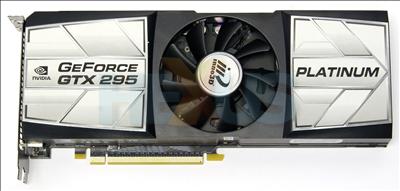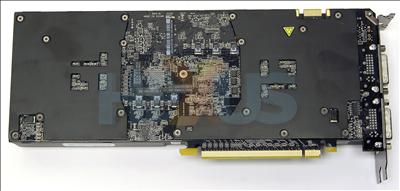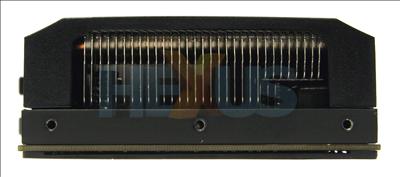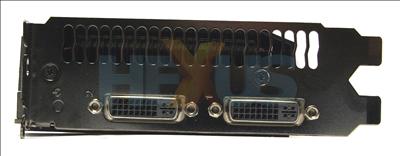Single-PCB goodness?
The older GeForce GTX 295, taken on in reference form by the majority of NVIDIA's partners, ships with each of the two GPUs on a separate PCB, facing one another. That card weighs in at 1,213g and measures 267mm(W) x 111mm(H) x 38mm(D).
Now, NVIDIA has transitioned that process to a single PCB, akin to most other graphics cards, and the 'new' GTX 295 weighs in at a relatively svelte 971g. Card dimensions stay the same - more of less - and it remains a two-slot-taking card.
What's somewhat disappointing is that the specifications remain the same, though. Both GPUs have 240 stream processors clocked in at 1,242MHz; core speed remains at 576MHz, and 1,792MB of GDDR3 memory at an effective 1,998MHz. Inno3D very marginally boosts the memory clock, to 2,016MHz. Card-wide power, however, is static, at a maximum of 289W.
In effect, it's the GeForce GTX 295 as we know it, albeit presented in a slightly different form factor.
A peek at the back shows the single SLI connector. One can add a second GTX 295 for quad-SLI usage.
Power requirements remain the same, that is, six-pin and eight-pin PCIe. An S/PDIF connector, near the SLI finger, enables audio hook-up and passthrough.
The chunky heatsink works well enough, keeping the single-PCB card down to just 66°C under load. The large fan spins relatively slowly and ensures the card's reasonably quiet when idling and under load. It's certainly no worse than the older HSF combination.
The use of a single PCB means that the rear-mounted ports aren't 'upside-down' any more. They're both dual-link capable, but we consider the part of the card to be a backward step; the original features an HDMI port. This time around you need to use a (provided) dongle.
Priced at £356 right now, the Inno3D GeForce GTX 295 Platinum 1,792MB is one of the cheaper GTX 295s around, by dint of the single-PCB production.















